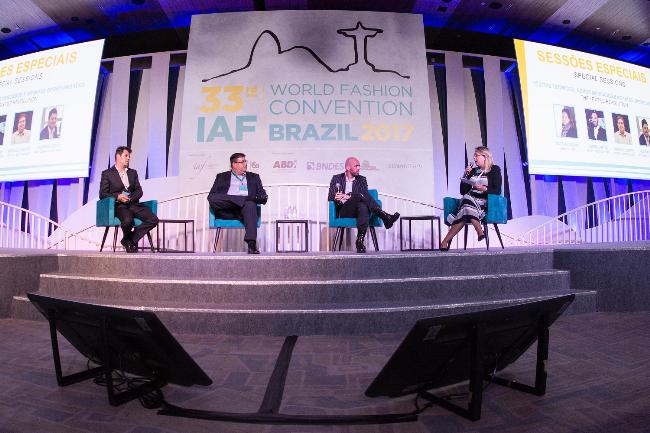IAF’S Special Sessions: technical textiles open doors to many possibilities

The union of academic knowledge and experience in different sectors of the industry were more than welcome in the IAF Conference’s programming, held between November 16 and 18 in Rio de Janeiro. One of those situations was the debate “Technical Textiles: New Markets and Infinite Opportunities,” which included different experts to discuss the possibilities of that market niche.
Ricardo Cecci, Technological and Innovation Development coordinator at SENAI CETIQT, opened the roundtable setting the scene for technical textiles in Brazil and around the world. “We know that currently 70% of the market involves the consumption of chemical fibers. There is a trend to change from traditional to technical textiles,” he claimed. According to this researcher, business in this segment is expected to reach U$ 315 billion in 2020.
Marcello Bathe, responsible for New Business development at the Solvay/Rhodia Group, revealed some of the company’s plans and macrotrends in the synthetic fiber segment. “Our goal is to act in a way so that the sale value of a product is not higher than its value for the planet. We have therefore remodeled our creations according to that purpose,” he emphasized. Among the new directions, Bathe mentioned Connectivity as one of the highlights. “Consumers want the very clothing items to convey sensations and information, thus optimizing their use. A research has shown that 40% of people feel naked without their wearable items,” he said. “We believe the future lies in offering a product bearing several features in the same item,” he concluded.
The importance of selecting the right raw materials, and ensuring durability and great design for the automotive and aviation industries was raised by Fabien Darche, color style & materials manager in Latin America for the Color&Trim Design Division, and color style and materials manager for the PSA Peugeot Citroën Group. During his lecture, he explained Trim Design and its relevance for a product’s good sales performance. “This area is responsible for everything a client will touch, such as shape, textures, colors and trimming, decoration, painting, and thread materials, and finally harmonizing all those ingredients,” he stressed.
Darche also pointed to some of the trends to be explored and related marketing opportunities. “Ecological and social responsibility is very important. People want materials that tell the true story behind their use. A part of the automotive industry has already been using recycled items, such as PET bottles or pirarucu fish leather, and it has been a success,” he said.
The debate was mediated by Mariana Doria, a Market Relations expert at SENAI CETIQT.
abit, IAF, IAF Brasil